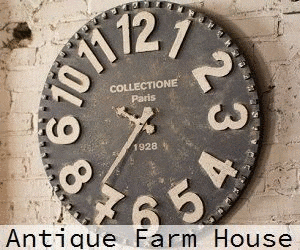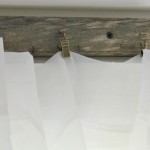When life gives you lemons, you make lemonade.
And when your Mother-in-law gives you an old, beat-up chair, you recover it.
I think that’s how the saying goes. My in-laws had a chair that was on it’s last leg sitting in their body shop. Here’s how I took this eyesore and turned it into a showpiece – my no sew method to reupholstering a wingback chair.
I’m sure this wingback was a stunner 30 years ago, standing tall in it’s tuftedness wearing those brass nails with pride. And just as we all do, it succumbed to age and wear and tear. The cushion no longer cushed, and the smell that wafted from the ripped pleather was quite unique, but when my MIL asked us if we wanted this chair – I jumped at the chance for a new project!
Let me be clear – this is not a tutorial post, because I had to reference other bloggers to help me out. Jessica from Four Generations One Roof has an awesome no-sew reupholstery tutorial that was a huge help for me – plus she has a video which is what made this whole thing tangible. And, this chart from Jenny from Little Green Notebook helped me know how much fabric and batting to purchase. I highly suggest you use their posts as references to help out your upholstery project.
The Plan
Before I began, I had to get my mind wrapped around reupholstering this chair since this was my first attempt ever at upholstery.
And to be honest – all those buttons intimidated me.
I knew that if I tried to mimic the tufting, this project would be a beast to tackle, so I made it easy for myself and opted to forgo the 45 tufted buttons and just recover the chair.
According to Jenny’s chart, I purchased 6 1/2 yards of fabric and batting. Next, I gathered my tools and let me tell you, this was the smartest step. I purchased one of these staple remover claws. Be prepared to remove hundreds of staples – HUNDREDS – and you will need the right tool for the job.
I also purchased a pneumatic staple gun to make the no-sew process easier on me. You just hook it up to an air compressor and it makes the stapling easy peasy. Plus I felt like a boss with each pop of the stapler!

 The Process
The Process
As I started disassembling the chair, I made sure to document the steps to make it helpful to reassemble. I took pictures as I went along and kept track of the pieces.
As each panel was removed, I numbered it and notated it so I knew which piece was which. You will want to save the old panels and use them as templates to cut out the new fabric panels, so don’t throw them away!
Another thing is to look out for are the upholstery ribs and tack strips.
Again, this is where taking photos saved this project. Seeing how the manufacturer placed them and mimicking their method made this project doable for me.
As I was removing the fabric, I noticed that the foam in the back and seat of the chair had holes where the buttons were.
To fix the holes in the foam, I came up with a neat idea. The tufted buttons were tied around huge hunks of batting on the back side. I snipped the buttons free removing the batting.
Then I used those huge gobs of cotton to stuff the holes on the front side.
After disassembling the chair, I covered it with batting and and it looked as if those holes were never there!
The last thing I did before referring to the tutorials was to add the cush back to the seat. We happened to have 3 inch foam on hand from sound proofing our recording studio, so I used those scraps to fix the saggy seat. I also spray painted the legs of the chair black.
Then I followed the steps in the tutorials to reassemble the chair, using my notes and photos as a reference, cutting the pieces from the saved fabric panels.
And my, doesn’t she look so pretty?!
I took this discarded, headed to the dump of a chair and turned it into a stunner!
I spray painted the old brass trim black and added it back to the chair.
One disappointment was the armrests. I tried to nail the the brass tacks back on the armrests, but they wouldn’t go in straight, no matter how I tried. After about four hours of failed attempts, and finally calling uncle to have Trent give it a try with no success, we abandoned the nail heads on the arms. It was just too frustrating, but even without the brass tacks, it still looks great!
I opted for black piping to give the chair a little pop. Plus it looks great with the black nail heads and black legs.
The other tricky problem was getting the patterned fabric to line up. That little detail made my head hurt as if I were solving an algebraic equation.
It may not be perfect, but I’m very pleased with the end result! It’s super cushy and comfy and I’m proud to know that I rescued a piece from the dump.
I love to hear from y’all and your comments make my day! To leave me a note, scroll to the bottom of this post.








































